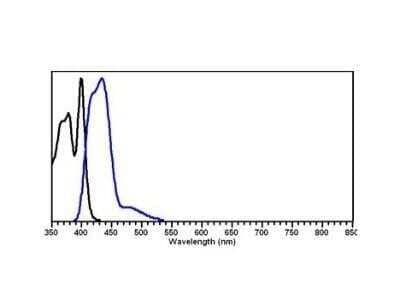Rabbit anti-Mouse IgG (H+L) Secondary Antibody (Pre-adsorbed)
Novus Biologicals, part of Bio-Techne | Catalog # NBP1-72731

![Western Blot: Rabbit anti-Mouse IgG (H+L) Secondary Antibody (Pre-adsorbed) [NBP1-72731] Western Blot: Rabbit anti-Mouse IgG (H+L) Secondary Antibody (Pre-adsorbed) [NBP1-72731]](https://resources.bio-techne.com/images/products/Rabbit-anti-Mouse-IgG-H+L-Secondary-Antibody-Pre-adsorbed-Western-Blot-NBP1-72731-img0007.jpg)
Forumulation
Catalog #
Key Product Details
Species Reactivity
Mouse
Applications
ELISA, Fluorophore-linked immunosorbent assay, Immunocytochemistry/ Immunofluorescence, Immunohistochemistry, Western Blot
Label
Unconjugated
Antibody Source
Polyclonal Rabbit IgG
Format
Pre-adsorbed
Concentration
Please see the vial label for concentration. If unlisted please contact technical services.
Product Specifications
Immunogen
Rabbit anti-Mouse IgG (H+L) Secondary Antibody (Pre-adsorbed) was produced by repeated immunization with mouse IgG whole molecule in rabbit
Specificity
This antibody was pre-adsorbed against Human Serum Proteins. No reaction was observed against Human Serum Proteins.
Clonality
Polyclonal
Host
Rabbit
Isotype
IgG
Description
This product was prepared from monospecific antiserum by immunoaffinity chromatography using Mouse IgG coupled to agarose beads followed by solid phase adsorption(s) to remove any unwanted reactivities. Assay by immunoelectrophoresis (IEP) resulted in a single precipitin arc against anti-Rabbit Serum, Mouse IgG and Mouse Serum
Store vial at 4C prior to opening. This product is stable for several weeks at 4C as an undiluted liquid. Dilute only prior to immediate use. For extended storage aliquot contents and freeze at -20C or below. Avoid cycles of freezing and thawing.
Store vial at 4C prior to opening. This product is stable for several weeks at 4C as an undiluted liquid. Dilute only prior to immediate use. For extended storage aliquot contents and freeze at -20C or below. Avoid cycles of freezing and thawing.
Scientific Data Images for Rabbit anti-Mouse IgG (H+L) Secondary Antibody (Pre-adsorbed)
Western Blot: Rabbit anti-Mouse IgG (H+L) Secondary Antibody (Pre-adsorbed) [NBP1-72731]
Western Blot: Rabbit anti-Mouse IgG (H+L) Secondary Antibody (Pre-adsorbed) [NBP1-72731] - Western blot expression of phospho PDH, PDK1, LDH5 and HIF1 alpha in hepatoma HepG2 cells, at 0, 30 and 60 min following exposure to 100 ug/ml of amifostine. Secondary antibody used: Rabbit anti-Mouse IgG (H+L) Secondary Antibody (NBP1-72731). Image collected and cropped by CiteAb from the following publication (https://www.nature.com/articles/srep30986) licensed under a CC-BY license.Immunocytochemistry/ Immunofluorescence: Rabbit anti-Mouse IgG (H+L) Secondary Antibody (Pre-adsorbed) [NBP1-72731]
Immunocytochemistry/Immunofluorescence: Rabbit anti-Mouse IgG (H+L) Secondary Antibody (Pre-adsorbed) [NBP1-72731] - Hep core expression in Huh7 cells. Cells were fixed in 4% paraformaldehyde for 20 minutes at room temperature. The secondary antibody was diluted in 1% BSA in PBS at 1:500 dilution for 20 minutes at room temperature. Image from verified customer review. Image from the DyLight 488 version of this antibody.Western Blot: Rabbit anti-Mouse IgG (H+L) Secondary Antibody (Pre-adsorbed) [NBP1-72731]
Western Blot: Rabbit anti-Mouse IgG (H+L) Secondary Antibody (Pre-adsorbed) [NBP1-72731] - Western Blot: Rabbit anti-Mouse IgG Secondary Antibody [Rhodamine] [NB120-6725] - Lane 1: Mouse IgG. Lane 2: None. Load: 50 ng per lane.Applications for Rabbit anti-Mouse IgG (H+L) Secondary Antibody (Pre-adsorbed)
Application
Recommended Usage
ELISA
1:20000 - 1:40000
Immunohistochemistry
1:1000 - 1:5000
Western Blot
1:2000 - 1:10000
Application Notes
This product has been tested by ELISA and is suitable for immunoblotting (western or dot blot), ELISA, and immunohistochemistry as well as other peroxidase-antibody based enzymatic assays requiring lot-to-lot consistency.
Formulation, Preparation, and Storage
Purification
Multi-step
Formulation
0.02 M Potassium Phosphate, 0.15 M Sodium Chloride, pH 7.2
Format
Pre-adsorbed
Preservative
0.01% Sodium Azide
Concentration
Please see the vial label for concentration. If unlisted please contact technical services.
Shipping
The product is shipped with polar packs. Upon receipt, store it immediately at the temperature recommended below.
Stability & Storage
Store at 4C short term. Aliquot and store at -20C long term. Avoid freeze-thaw cycles.
Background: IgG (H+L)
The 4 IgG subclasses, sharing 95% amino acid identity, include IgG1, IgG2, IgG3, and IgG4 for humans and IgG1, IgG2a, IgG2b, and IgG3 for mice. The relative abundance of each human subclass is 60% for IgG1, 32% for IgG2, 4% for IgG3, and 4% for IgG4. In an IgG deficiency, there may be a shortage of one or more subclasses (4).
References
1. Painter RH. (1998) Encyclopedia of Immunology (Second Edition). Elsevier. 1208-1211
2. Chapter 9 - Antibodies. (2012) Immunology for Pharmacy. Mosby 70-78
3. Schroeder H, Cavacini, L. (2010) Structure and Function of Immunoglobulins. J Allergy Clin Immunol. 125(2 0 2): S41-S52. PMID: 20176268
4. Vidarsson G, Dekkers G, Rispens T. (2014) IgG subclasses and allotypes: from structure to effector functions. Front Immunol. 5:520. PMID: 25368619
Additional IgG (H+L) Products
Product Documents for Rabbit anti-Mouse IgG (H+L) Secondary Antibody (Pre-adsorbed)
Product Specific Notices for Rabbit anti-Mouse IgG (H+L) Secondary Antibody (Pre-adsorbed)
This product is for research use only and is not approved for use in humans or in clinical diagnosis. Secondary Antibodies are guaranteed for 1 year from date of receipt.
Loading...
Loading...
Loading...
Loading...
![Immunocytochemistry/ Immunofluorescence: Rabbit anti-Mouse IgG (H+L) Secondary Antibody (Pre-adsorbed) [NBP1-72731] Immunocytochemistry/ Immunofluorescence: Rabbit anti-Mouse IgG (H+L) Secondary Antibody (Pre-adsorbed) [NBP1-72731]](https://resources.bio-techne.com/images/products/Rabbit-anti-Mouse-IgG-H+L-Secondary-Antibody-Pre-adsorbed-Immunocytochemistry-Immunofluorescence-NBP1-72731-img0004.jpg)
![Western Blot: Rabbit anti-Mouse IgG (H+L) Secondary Antibody (Pre-adsorbed) [NBP1-72731] Western Blot: Rabbit anti-Mouse IgG (H+L) Secondary Antibody (Pre-adsorbed) [NBP1-72731]](https://resources.bio-techne.com/images/products/Rabbit-anti-Mouse-IgG-H+L-Secondary-Antibody-Pre-adsorbed-Western-Blot-NBP1-72731-img0003.jpg)
![Immunocytochemistry/ Immunofluorescence: Rabbit anti-Mouse IgG (H+L) Secondary Antibody (Pre-adsorbed) [NBP1-72731] Immunocytochemistry/ Immunofluorescence: Rabbit anti-Mouse IgG (H+L) Secondary Antibody (Pre-adsorbed) [NBP1-72731]](https://resources.bio-techne.com/images/products/Rabbit-anti-Mouse-IgG-H+L-Secondary-Antibody-Pre-adsorbed-Immunocytochemistry-Immunofluorescence-NBP1-72731-img0005.jpg)

![ELISA: Rabbit anti-Mouse IgG (H+L) Secondary Antibody (Pre-adsorbed) [NBP1-72731] ELISA: Rabbit anti-Mouse IgG (H+L) Secondary Antibody (Pre-adsorbed) [NBP1-72731]](https://resources.bio-techne.com/images/products/Rabbit-anti-Mouse-IgG-H+L-Secondary-Antibody-Pre-adsorbed-ELISA-NBP1-72731-img0009.jpg)